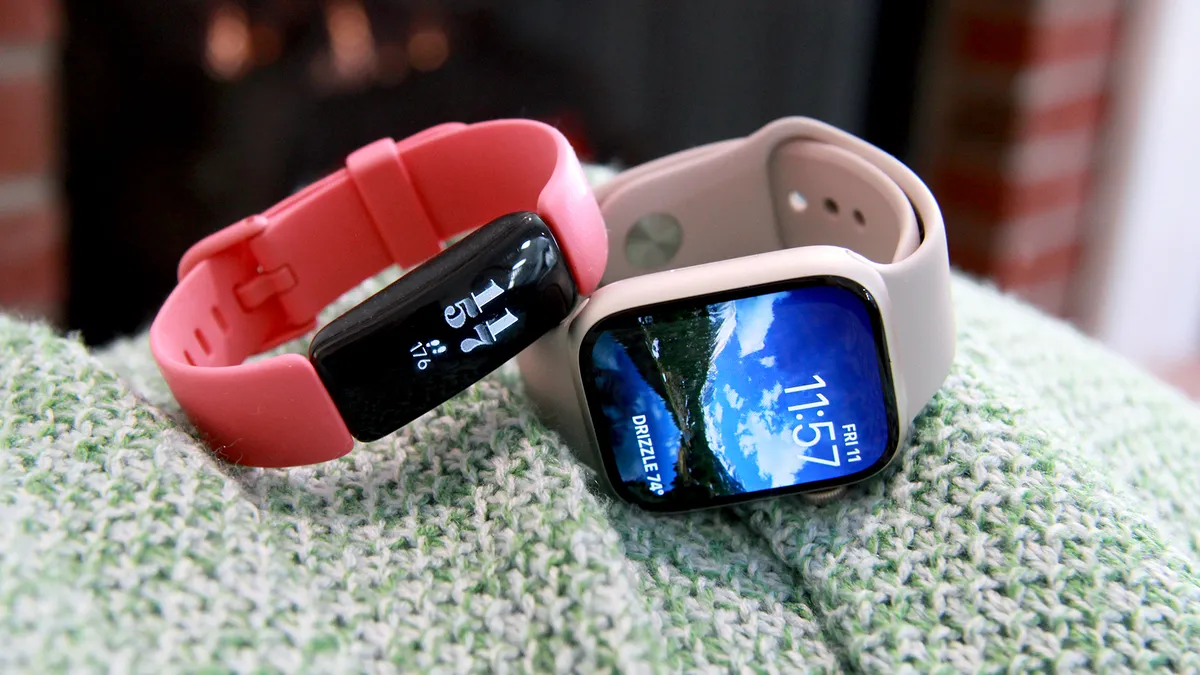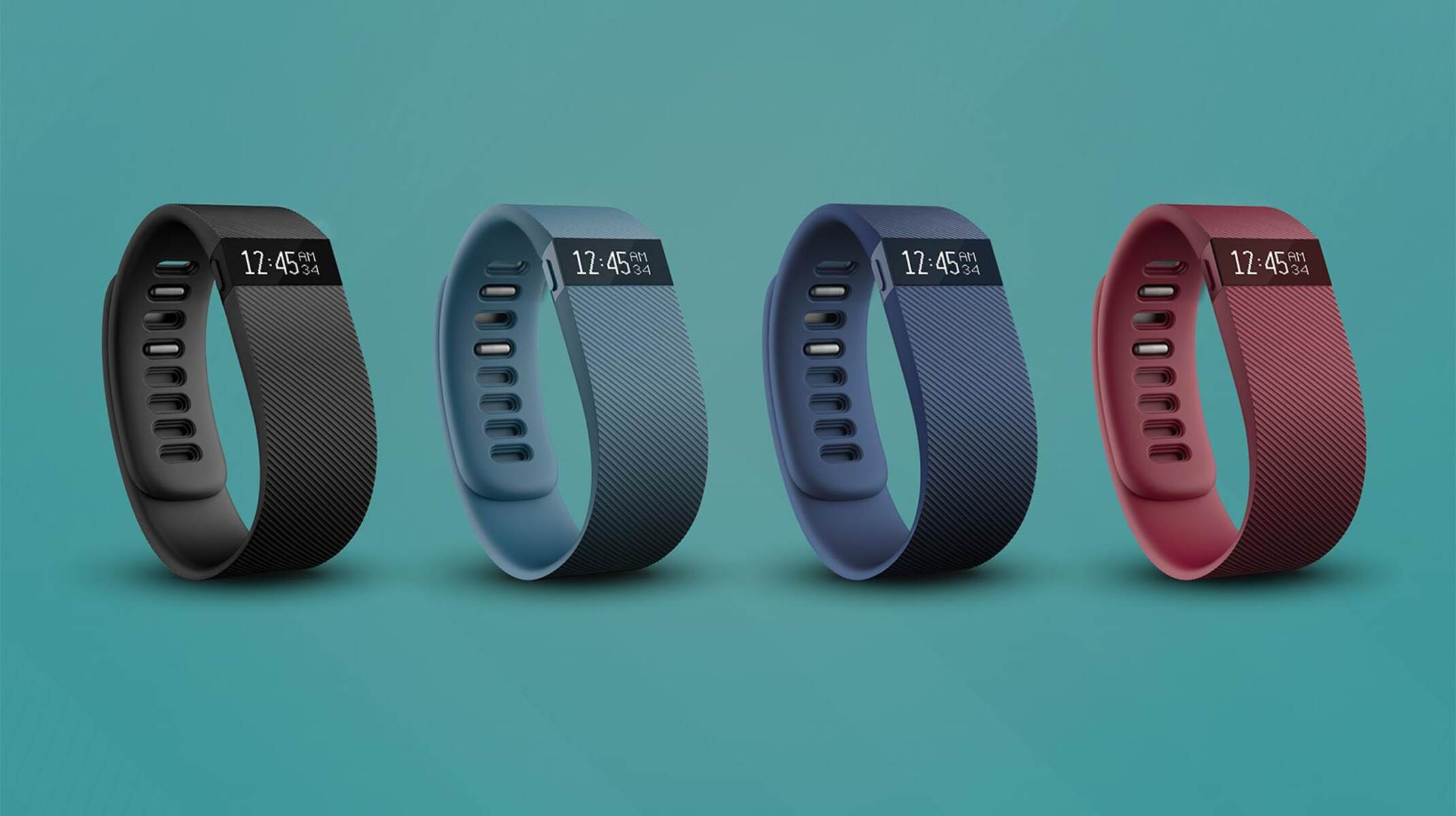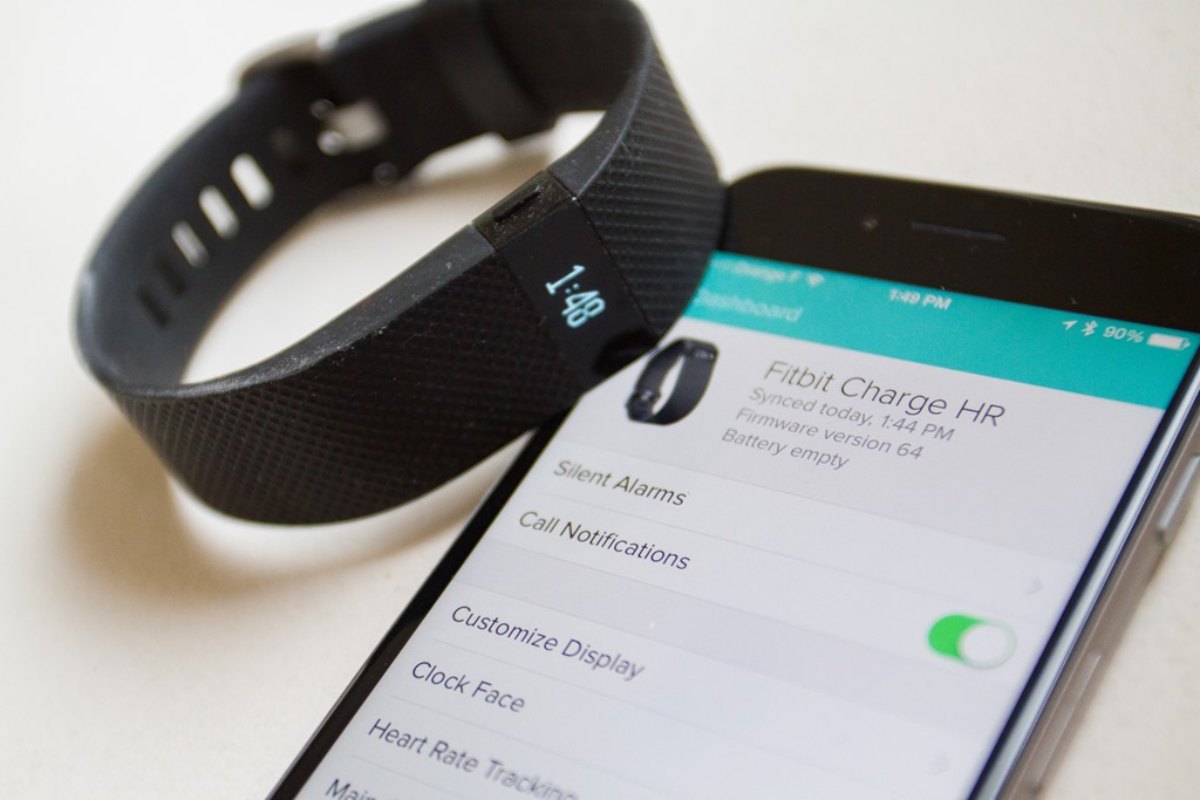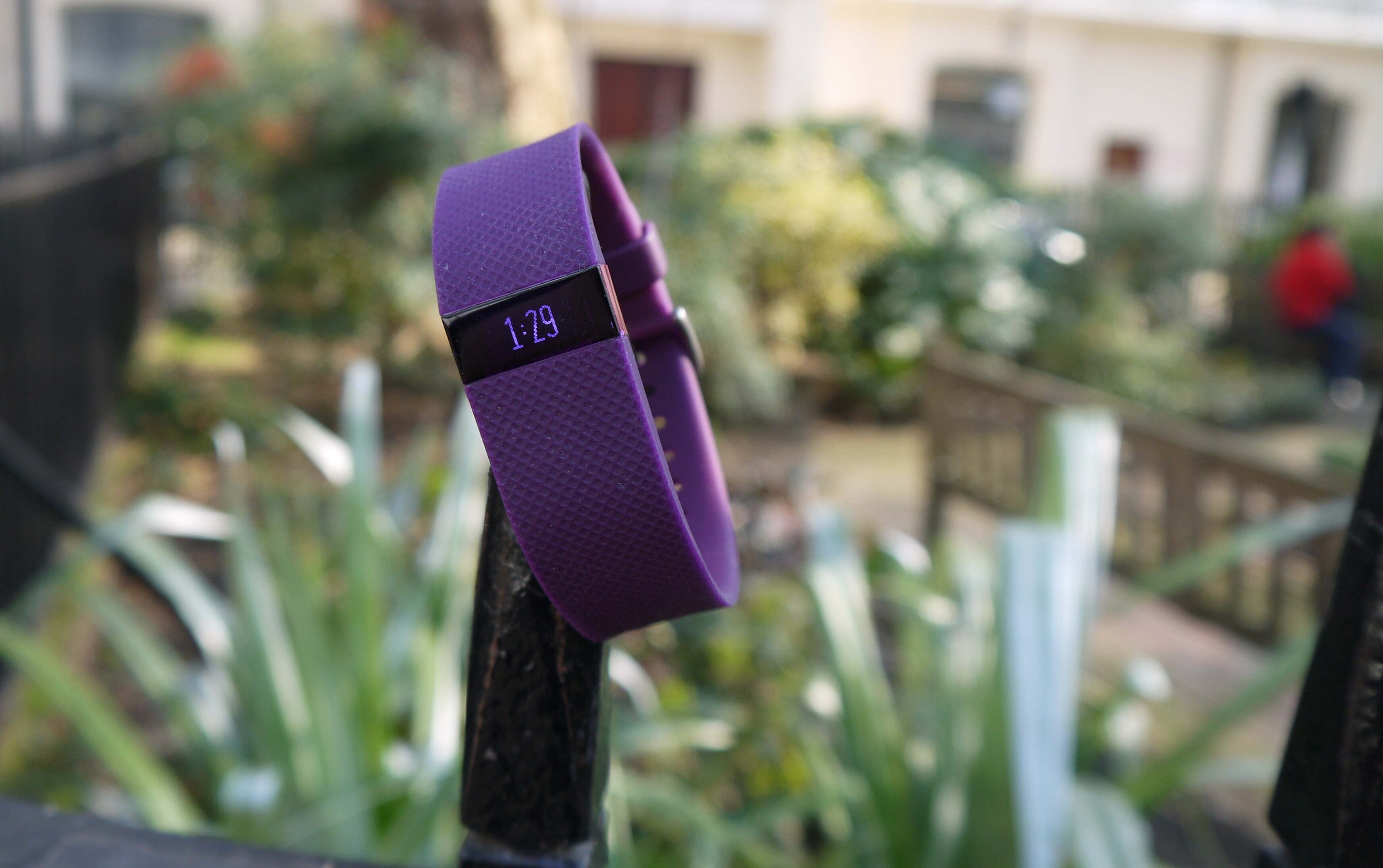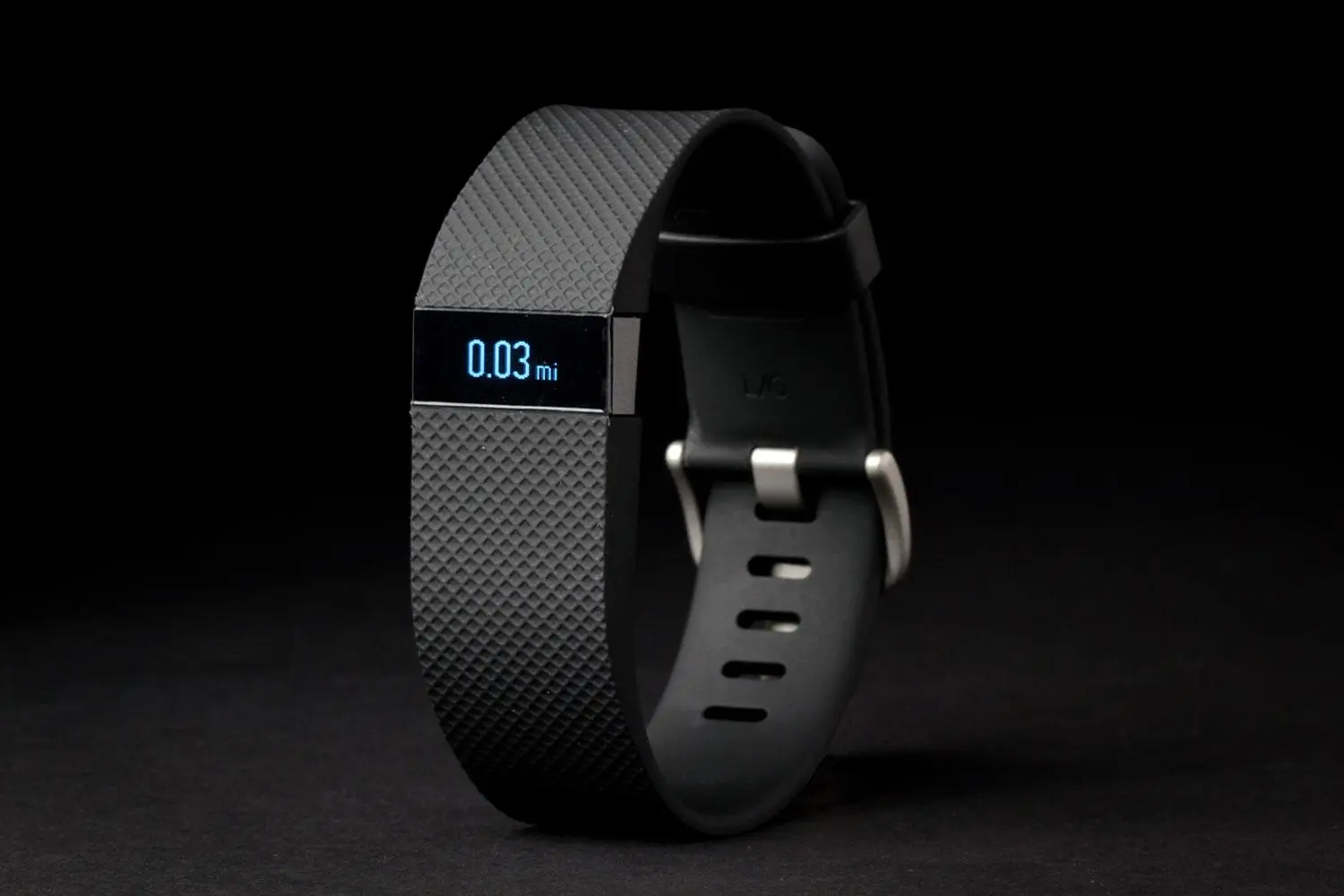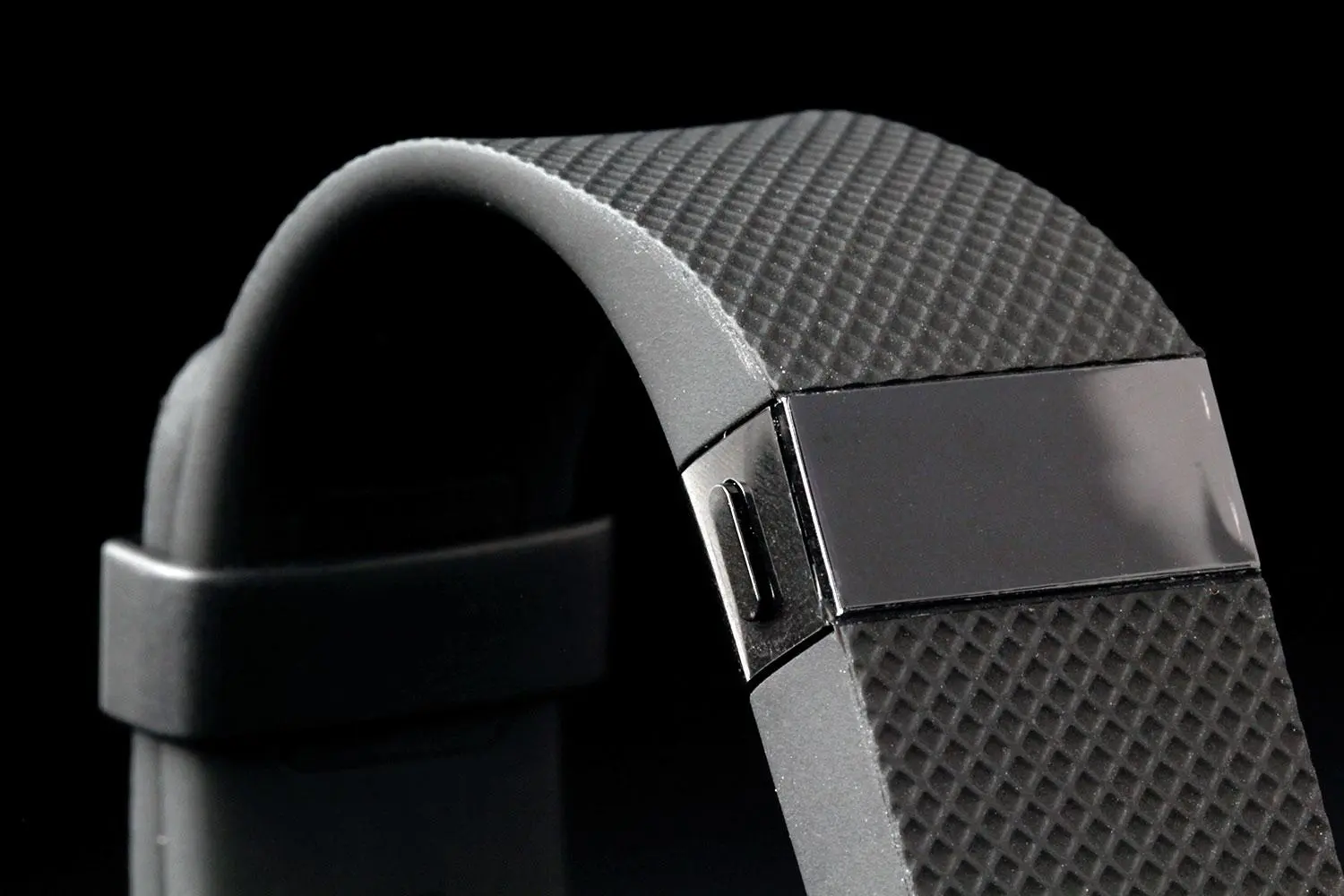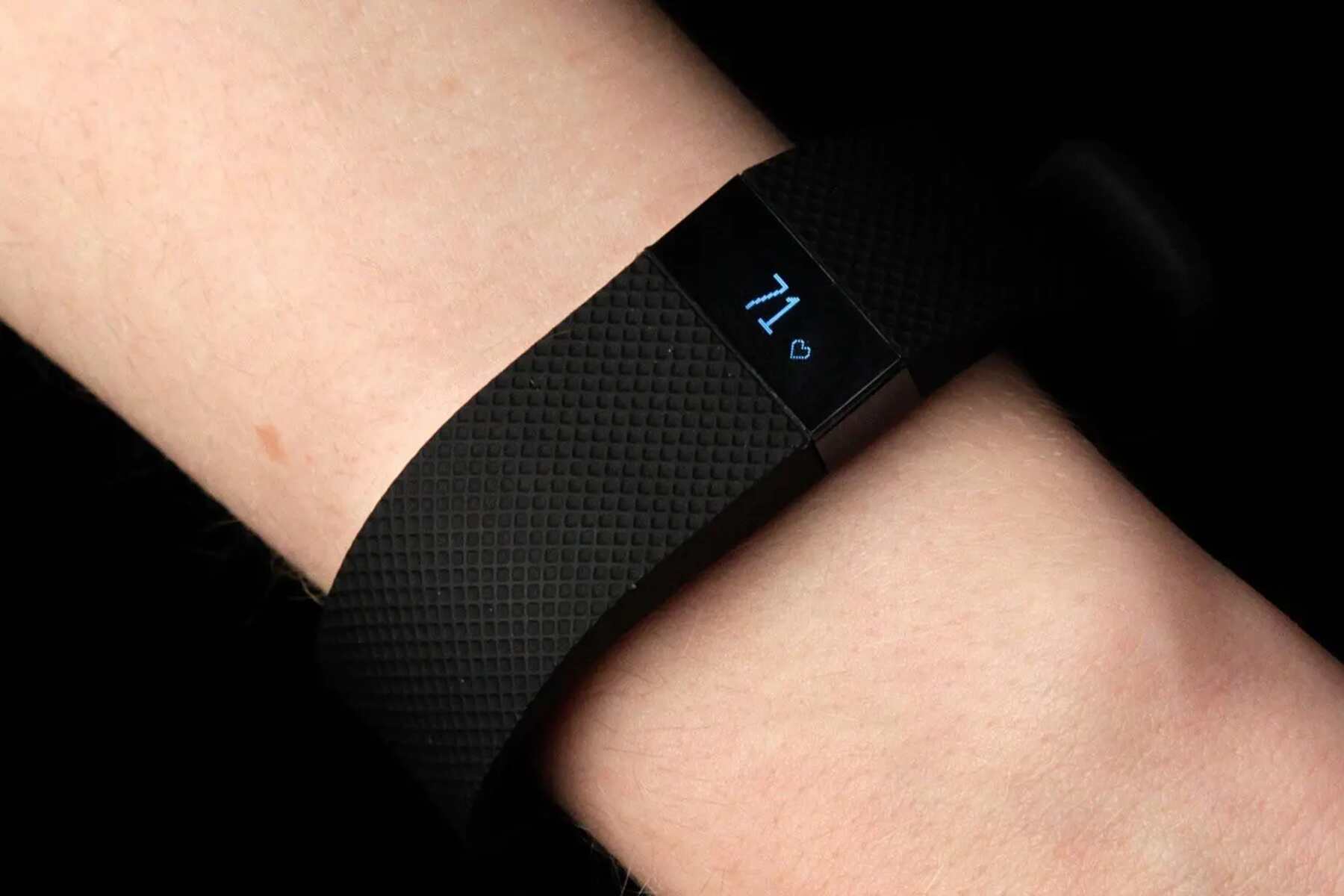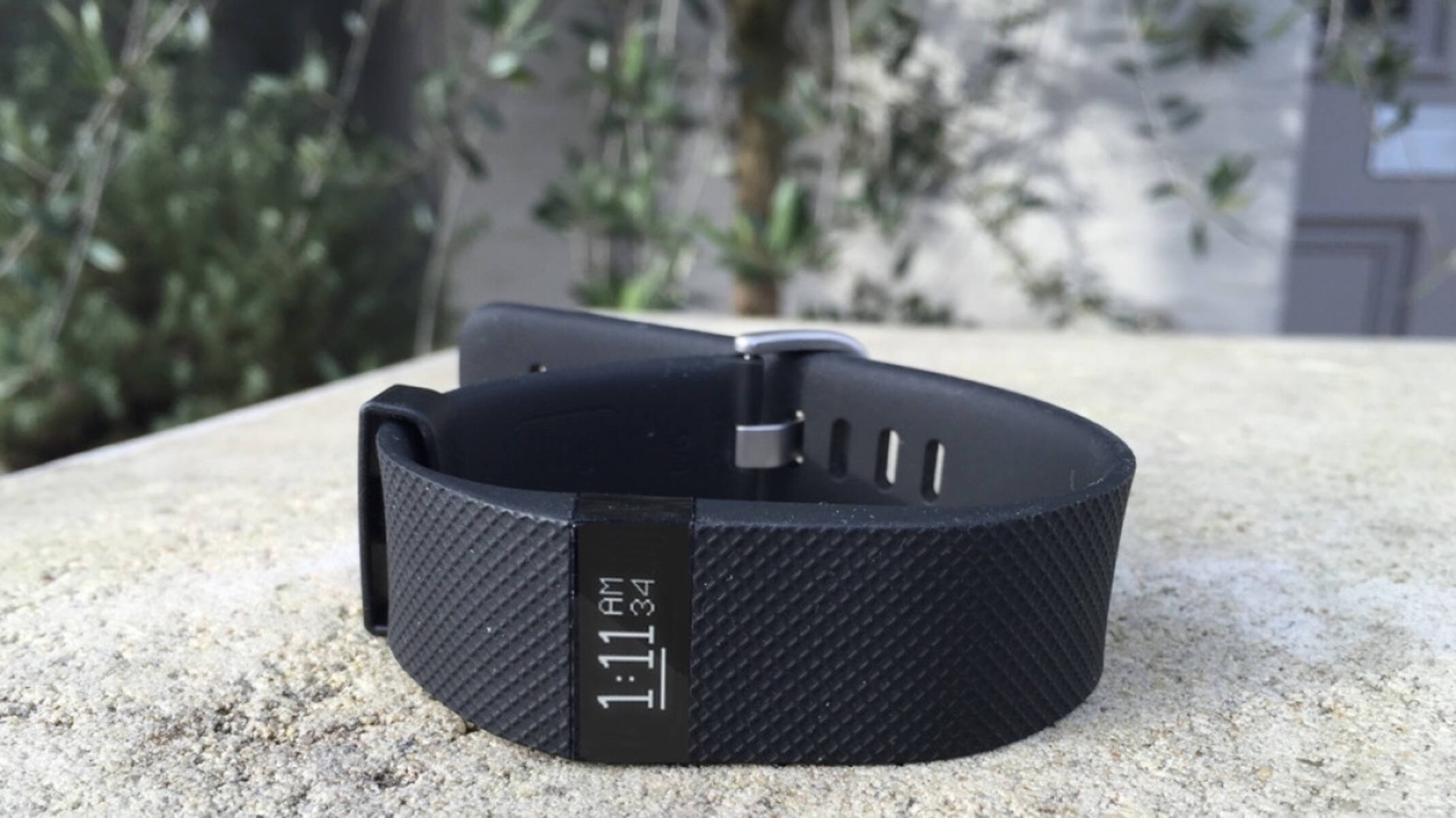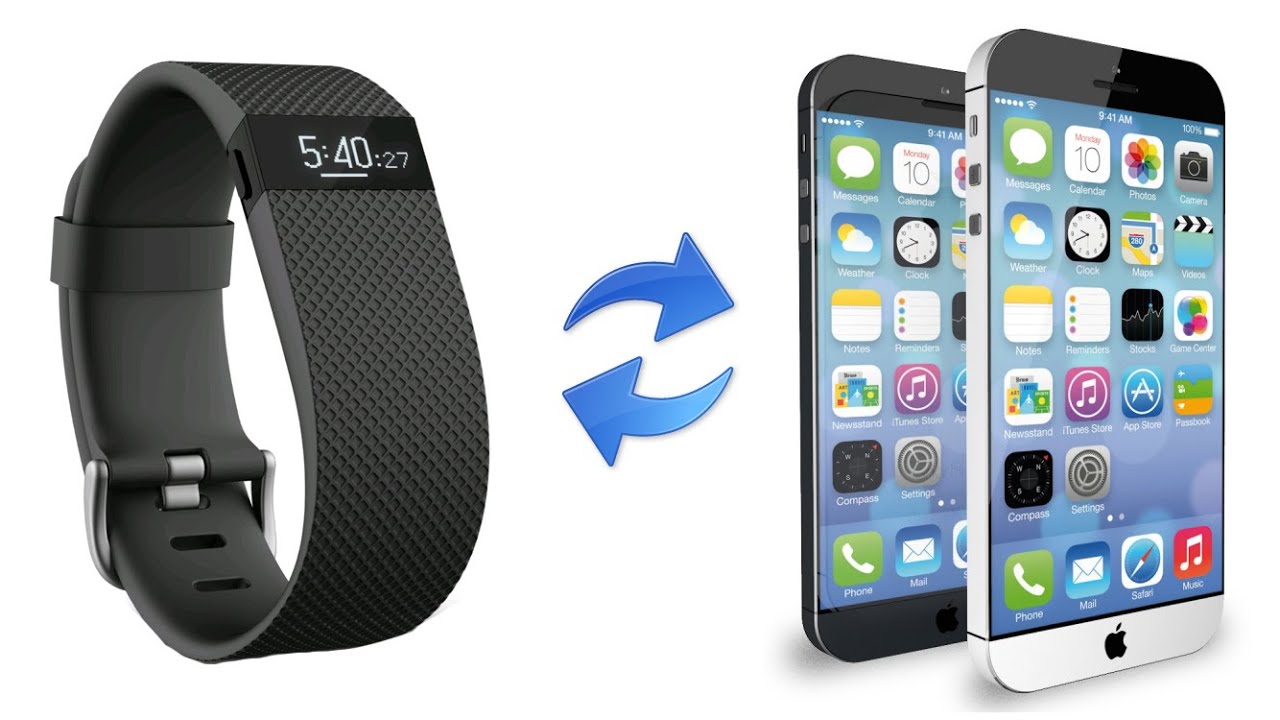Introduction
Welcome to the world of fitness tracking with the Fitbit HR! Whether you're new to wearable technology or upgrading from an older model, the Fitbit HR offers a wealth of features designed to help you monitor your fitness journey with precision and ease. This comprehensive guide will walk you through the essential steps of setting up, syncing, and making the most of your Fitbit HR.
As you embark on this journey, it's important to understand the potential impact of wearable fitness technology on your overall well-being. The Fitbit HR is not just a device; it's a companion that empowers you to take charge of your health and fitness goals. By seamlessly integrating into your daily routine, this wearable marvel provides valuable insights into your activity levels, sleep patterns, heart rate, and more.
Throughout this guide, you'll discover how to harness the full potential of your Fitbit HR, from setting it up and syncing it with your smartphone to interpreting the data it generates. Moreover, you'll learn how to establish fitness goals and track your progress, ensuring that you make the most of this cutting-edge technology.
So, fasten your wristband and get ready to dive into the world of fitness tracking with your Fitbit HR. Whether you're aiming to boost your daily step count, optimize your sleep quality, or monitor your heart rate during workouts, this guide will equip you with the knowledge and skills to make the most of your Fitbit HR. Let's embark on this journey together and unlock the full potential of your fitness tracking experience.
Step 1: Setting Up Your Fitbit HR
Setting up your Fitbit HR is the crucial first step towards harnessing its full potential. The process is straightforward and ensures that your device is personalized to your individual needs. Let's dive into the essential steps to get your Fitbit HR up and running.
-
Unboxing Your Fitbit HR: Upon unboxing your Fitbit HR, you'll find the device itself, along with the charging cable and possibly additional wristbands. Take a moment to familiarize yourself with the components and ensure that everything is included as per the packaging.
-
Charging Your Fitbit HR: Before you begin the setup process, it's advisable to ensure that your Fitbit HR is adequately charged. Connect the device to the provided charging cable and plug it into a power source. Allow it to charge for a sufficient period to ensure a full battery.
-
Downloading the Fitbit App: To begin the setup process, download the Fitbit app from the App Store (for iOS devices) or Google Play Store (for Android devices). Once downloaded, open the app and follow the on-screen instructions to create a Fitbit account.
-
Pairing Your Fitbit HR with the App: Once your account is set up, the app will prompt you to pair your Fitbit HR with your smartphone. This is a crucial step to ensure seamless synchronization of data between your device and the app.
-
Personalizing Your Fitbit HR: After pairing your device, you'll be guided through the process of personalizing your Fitbit HR. This includes setting up your profile, inputting vital information such as height, weight, and fitness goals, and customizing your device settings to align with your preferences.
-
Exploring the Features: Familiarize yourself with the various features of your Fitbit HR, such as tracking your steps, monitoring your heart rate, and analyzing your sleep patterns. Take the time to navigate through the device interface and understand how to access different functionalities.
By following these steps, you'll have successfully set up your Fitbit HR, ensuring that it's tailored to your specific needs and ready to accompany you on your fitness journey. With the initial setup complete, you're now poised to delve into the world of fitness tracking and make the most of your Fitbit HR's capabilities.
Step 2: Syncing Your Fitbit HR with Your Smartphone
Syncing your Fitbit HR with your smartphone is a pivotal step that enables seamless data transfer between your device and the Fitbit app. This synchronization process ensures that your fitness and health data is accurately recorded and conveniently accessible for analysis and tracking. Let's dive into the detailed steps to effortlessly sync your Fitbit HR with your smartphone.
-
Open the Fitbit App: Begin by opening the Fitbit app on your smartphone. Ensure that your device's Bluetooth functionality is turned on to facilitate the pairing process.
-
Access the Dashboard: Upon launching the app, navigate to the dashboard, which serves as the central hub for viewing and managing your fitness data. Here, you'll find an array of metrics, including your daily step count, heart rate, sleep patterns, and more.
-
Tap on the Account Icon: Located in the upper-left corner of the dashboard, the account icon provides access to your personal profile and device settings. Tap on this icon to proceed with the syncing process.
-
Select Your Fitbit HR: Within the account settings, locate and select the option to add a new device. From the list of available Fitbit devices, choose the Fitbit HR to initiate the pairing process.
-
Follow the On-Screen Prompts: The app will guide you through the steps to pair your Fitbit HR with your smartphone. This typically involves confirming the device's identification and establishing a secure connection between the two devices.
-
Wait for the Confirmation: Once the pairing process is initiated, allow a few moments for the app to establish a successful connection with your Fitbit HR. Upon successful synchronization, a confirmation message will be displayed, indicating that your Fitbit HR is now linked to your smartphone.
-
Verify the Syncing Process: To ensure that the syncing process is functioning as intended, check for the latest data updates on your Fitbit app. This includes verifying that your daily activity, heart rate measurements, and sleep data are being accurately recorded and displayed within the app.
By following these steps, you'll successfully sync your Fitbit HR with your smartphone, enabling real-time data transfer and comprehensive tracking of your fitness journey. This synchronization ensures that your Fitbit HR becomes an integral part of your daily routine, providing valuable insights and empowering you to make informed decisions to optimize your health and well-being.
Step 3: Understanding Your Fitbit HR Data
Understanding the data generated by your Fitbit HR is essential for maximizing the benefits of this advanced fitness tracking device. By gaining insights into your activity levels, heart rate patterns, sleep quality, and more, you can make informed decisions to enhance your overall well-being. Let's delve into the comprehensive features of the Fitbit HR and explore how to interpret the valuable data it provides.
Activity Tracking:
The Fitbit HR diligently tracks your daily activity, including the number of steps taken, distance covered, and floors climbed. By accessing the activity data through the Fitbit app, you can gain a clear understanding of your movement patterns throughout the day. This information serves as a catalyst for setting and achieving personalized fitness goals, encouraging you to stay active and maintain a healthy lifestyle.
Heart Rate Monitoring:
One of the standout features of the Fitbit HR is its continuous heart rate monitoring capability. By analyzing your heart rate data, you can gain valuable insights into your cardiovascular health and exercise intensity. The device provides real-time heart rate measurements, allowing you to gauge the impact of physical activities on your heart and tailor your workouts for optimal results.
Sleep Analysis:
The Fitbit HR goes beyond daytime activity tracking by offering comprehensive insights into your sleep quality. By wearing the device during sleep, it automatically records your sleep duration, stages (including light, deep, and REM sleep), and any disruptions. This data empowers you to evaluate your sleep patterns, identify areas for improvement, and make adjustments to enhance the quality of your rest.
Exercise Recognition:
Equipped with SmartTrack technology, the Fitbit HR automatically recognizes and records various exercises, including running, biking, and aerobic workouts. By reviewing the exercise data captured by the device, you can gain a holistic view of your workout sessions, including duration, heart rate zones, and calorie expenditure. This information enables you to track your fitness progress and tailor your exercise routines to meet specific objectives.
Stress Management:
In addition to physical activity tracking, the Fitbit HR offers insights into your stress levels through its Relax feature. By practicing guided breathing exercises, you can leverage the device to manage stress and enhance overall well-being. The data captured during these sessions provides a glimpse into your relaxation patterns, empowering you to incorporate mindfulness practices into your daily routine.
By understanding and interpreting the diverse range of data provided by your Fitbit HR, you can harness its full potential to optimize your fitness journey and elevate your overall health and well-being. The actionable insights derived from the device's data serve as a guiding light, empowering you to make informed decisions and embark on a transformative path towards a healthier and more active lifestyle.
Step 4: Setting Goals and Tracking Progress
Setting goals is a pivotal aspect of any fitness journey, and the Fitbit HR empowers users to establish personalized objectives and meticulously track their progress. By leveraging the device's comprehensive features and intuitive interface, individuals can embark on a transformative path towards achieving their fitness aspirations.
Establishing Personalized Goals:
The Fitbit HR allows users to set personalized goals tailored to their unique preferences and fitness ambitions. Whether it's aiming to increase daily step count, improve sleep duration, or elevate cardiovascular endurance, the device enables individuals to define specific targets that align with their overall well-being objectives.
Utilizing Goal-Setting Tools:
Within the Fitbit app, users can access a range of goal-setting tools designed to facilitate the establishment and monitoring of fitness targets. From setting daily step targets to defining active minutes and calorie burn objectives, the app provides a user-friendly platform to customize and refine goals based on individual progress and preferences.
Tracking Progress in Real Time:
One of the key advantages of the Fitbit HR is its ability to provide real-time progress tracking, allowing users to monitor their performance and stay motivated. The device's seamless integration with the Fitbit app ensures that data pertaining to steps, heart rate, sleep patterns, and exercise activities is continuously updated, providing individuals with a comprehensive overview of their progress.
Celebrating Milestones and Achievements:
As users strive towards their fitness goals, the Fitbit HR serves as a reliable companion, celebrating milestones and achievements along the way. Whether it's reaching a significant step count, consistently meeting daily activity targets, or achieving improved sleep patterns, the device acknowledges and commemorates these accomplishments, fostering a sense of motivation and fulfillment.
Adapting Goals for Continuous Improvement:
The dynamic nature of fitness journeys often necessitates adjustments to goals based on evolving preferences and performance. The Fitbit HR empowers users to adapt and refine their goals as they progress, ensuring that their objectives remain relevant and conducive to sustained motivation and improvement.
By effectively setting goals and diligently tracking progress using the Fitbit HR, individuals can embark on a transformative fitness journey, leveraging actionable insights and real-time data to drive meaningful changes in their overall health and well-being. The device serves as a dedicated ally, empowering users to embrace a proactive approach to fitness and make tangible strides towards achieving their aspirations.
Step 5: Troubleshooting Common Syncing Issues
While the process of syncing your Fitbit HR with your smartphone is designed to be seamless, occasional issues may arise that hinder the synchronization of data. Understanding and addressing these common syncing issues is essential to ensure that your Fitbit HR functions optimally. Here's a comprehensive overview of troubleshooting steps to resolve common syncing issues:
-
Check Bluetooth Connectivity: Ensure that the Bluetooth functionality on your smartphone is enabled and actively seeking nearby devices. Additionally, verify that your Fitbit HR is within close proximity to your smartphone to facilitate a stable connection.
-
Restart Your Devices: Sometimes, a simple restart can resolve syncing issues. Restart both your Fitbit HR and your smartphone to refresh their connectivity and potentially resolve any underlying synchronization challenges.
-
Update the Fitbit App: Ensure that you have the latest version of the Fitbit app installed on your smartphone. App updates often include bug fixes and improvements that can address syncing issues.
-
Reset Bluetooth Connection: If syncing problems persist, you can attempt to reset the Bluetooth connection between your Fitbit HR and your smartphone. This involves removing the existing Bluetooth pairing and re-establishing the connection from scratch.
-
Check Internet Connection: A stable internet connection is crucial for seamless data synchronization between your Fitbit HR and the Fitbit app. Verify that your smartphone has a reliable internet connection, as disruptions in connectivity can impede the syncing process.
-
Update Firmware: Ensure that your Fitbit HR is running the latest firmware version. Periodic firmware updates may address known issues and enhance the device's compatibility with the Fitbit app, thereby improving syncing reliability.
-
Clear App Cache: If syncing issues persist, clearing the cache of the Fitbit app on your smartphone can help eliminate any temporary data or configuration conflicts that may be hindering synchronization.
By following these troubleshooting steps, you can effectively address common syncing issues and ensure that your Fitbit HR seamlessly communicates with your smartphone, enabling the accurate transfer of fitness and health data. Embracing a proactive approach to resolving syncing challenges will empower you to make the most of your Fitbit HR's capabilities, fostering a consistent and reliable fitness tracking experience.
Conclusion
In conclusion, the Fitbit HR stands as a beacon of innovation in the realm of wearable fitness technology, offering users a comprehensive suite of features designed to elevate their fitness tracking experience. Throughout this guide, we've navigated the essential steps of setting up the device, syncing it with a smartphone, understanding its data, setting goals, and troubleshooting common syncing issues. As we draw the curtain on this journey, it's important to reflect on the transformative potential that the Fitbit HR holds for individuals striving to enhance their health and well-being.
The Fitbit HR transcends the traditional boundaries of a wearable device, evolving into a trusted companion that empowers users to take charge of their fitness journey with precision and insight. By seamlessly integrating into daily routines, the device captures a myriad of data, including activity levels, heart rate patterns, sleep quality, and exercise activities, providing users with a holistic view of their well-being.
Furthermore, the Fitbit HR's ability to sync with a smartphone ensures that this wealth of data is conveniently accessible for analysis and tracking. Real-time progress tracking and personalized goal-setting tools serve as catalysts for individuals to embark on transformative paths toward achieving their fitness aspirations.
The actionable insights derived from the Fitbit HR's data serve as a guiding light, empowering users to make informed decisions and embrace a proactive approach to their health and fitness. Whether it's celebrating milestones, adapting goals for continuous improvement, or troubleshooting syncing issues, the device stands as a reliable ally in the pursuit of well-being.
As we part ways with this guide, it's essential to recognize the profound impact that the Fitbit HR can have on individuals' lives. Through its seamless integration of technology and fitness, the device transcends the role of a mere accessory, emerging as a steadfast companion that inspires and motivates users to embrace healthier lifestyles.
With the knowledge and insights gained from this guide, individuals are poised to unlock the full potential of their Fitbit HR, harnessing its capabilities to embark on transformative fitness journeys. The journey doesn't end here; it's a continuous evolution toward improved health, well-being, and vitality, with the Fitbit HR guiding the way.
So, as you fasten your wristband and step into the world of fitness tracking with your Fitbit HR, remember that the journey ahead is teeming with opportunities for growth, progress, and fulfillment. Embrace the power of the Fitbit HR, and let it be the beacon that illuminates your path toward a healthier, more active, and vibrant life.







